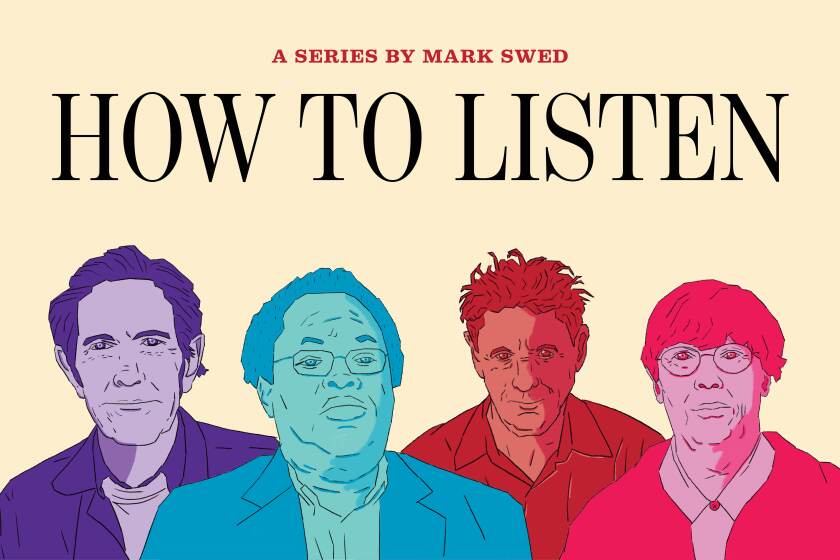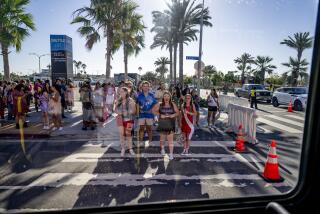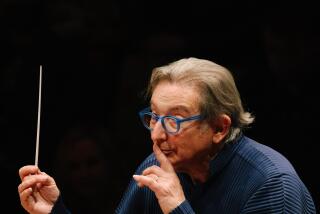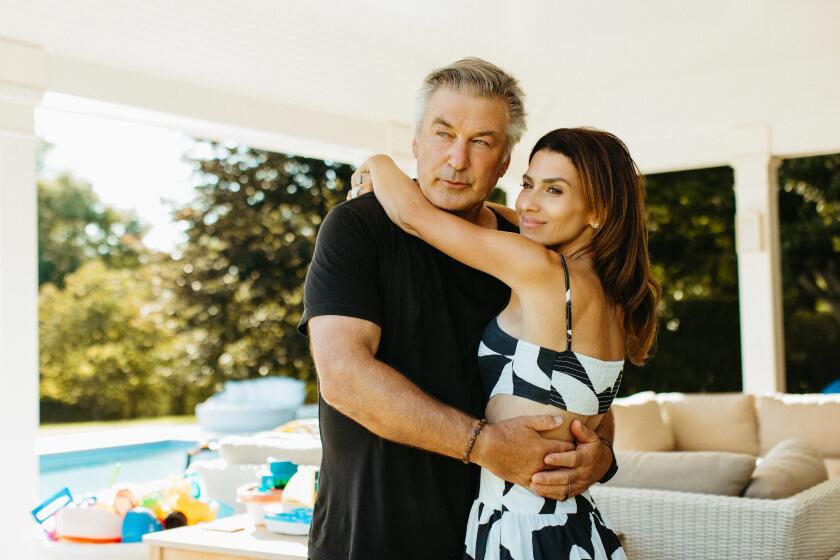Commentary: To go or not to go? That is the question for live concerts
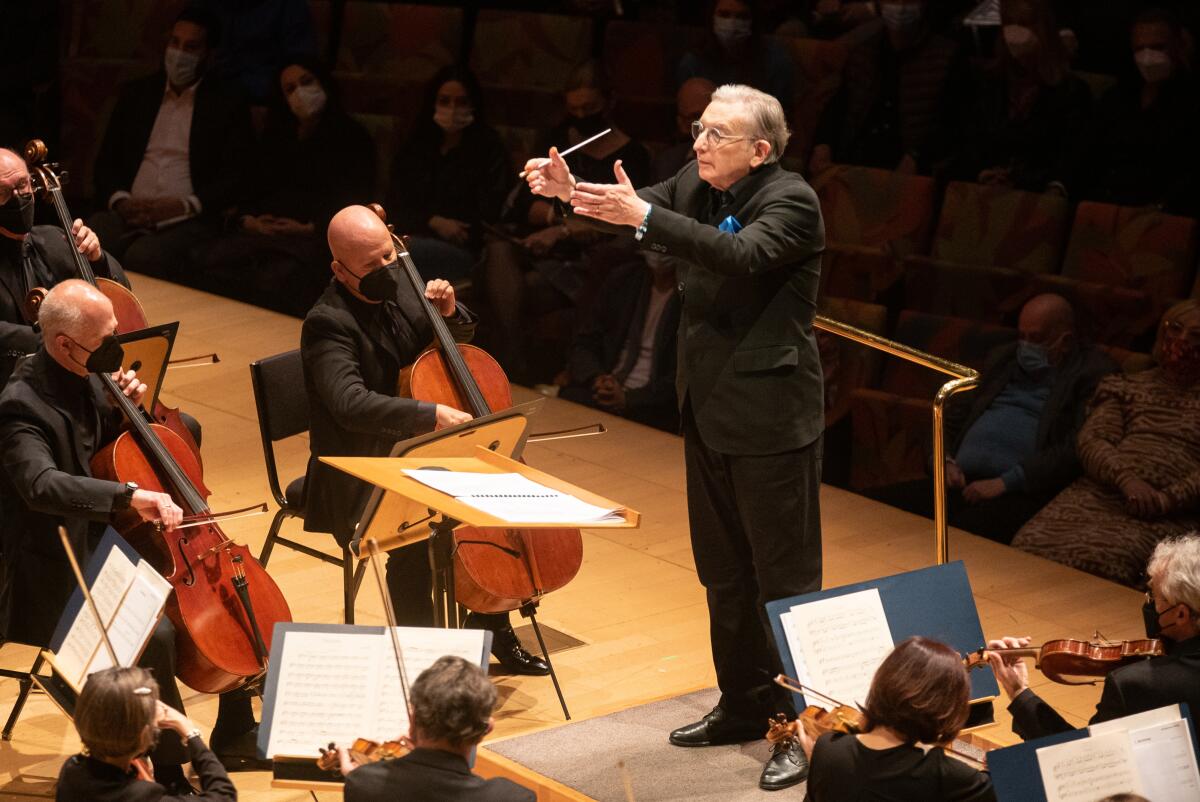
- Share via
When the full Los Angeles Philharmonic returned to Walt Disney Concert Hall last week for its first concert of the new year, much had changed during the orchestra’s month away. Omicron was no longer a nebulous threat but a havoc-wrecking reality. The number of positive tests in L.A County was 28 times higher than in early December. Health officials had begun discouraging large indoor gatherings, and each day, more arts organizations were postponing or canceling performances and exhibitions.
Arriving 45 minutes early as the orchestra advised, I breezed into the Disney parking lot last Friday night, no other cars in line, plenty of immediate free spaces. The vaccine check had moved outdoors in the front of the hall to make it a little safer. There was the regular Upbeat Live pre-concert talk in BP Hall that I would have otherwise dropped into, but, like most, I headed for the garden for a welcoming wine reception and plenty of room outdoors.
Attendance was light, and it would have been smaller still had the concert not been the occasion of Michael Tilson Thomas’ first appearance here since he began treatment for a brain tumor last summer. I know for a fact that it would have been at least one person smaller, because I wouldn’t have made the nervous-making effort myself.
All and all, the concert probably proved one of the safer public gatherings. Those around me — and there weren’t many — wore proper masks properly. Had I felt uncomfortable in my seat, I could have easily moved to another open space. John Cage’s “every seat is the best seat in the house” dictum held true even in the most virulent L.A. County surge yet.
Tilson Thomas conducted a phenomenal concert. It’s now six days later as I write, and I feel fine (but I haven’t tested). I can say in good conscience that I wouldn’t have missed it for the world. I like to think I may have served a useful purpose, reporting on the event, the venue, his inspiring resilience and the out-of-this-world performances, offering a bit of information to anyone trying to decide whether to chance it for MTT’s second week of concerts beginning tonight.
Can I really say any such thing? Is it a good or an ethical idea to go to a concert in the vortex of this unprecedented surge, what with local hospitals overwhelmed and understaffed and worse certain to come in the next weeks? Like so many questions during the last two years, we don’t have easy answers.
However virulent the Omicron variant is, the risk level for someone triple-vaxxed, medically masked, content to distance and in a properly ventilated and not overly crowded space with others presumably cautious and courteous, should not be great. It sure sounds better than time spent in busy airports and on a flight around the holidays. How much better, though, no one can say.
Driving home, I thought about risk. I’ve come to expect witnessing close calls on the freeways caused by reckless speeders on weekend nights after concerts. Friday night, though, the one thing that wasn’t surging was the traffic. It was surprisingly light and felt utterly safe. The odds of dying of COVID-19 from an L.A. Phil concert were surely less than being killed by a speeding driver on a normal night.
But that hardly lets us off the hook. Milder though the Omicron appears to be for most vaccinated folks, the variant spreads easily. Long COVID lurks along with other awful ailments. Once you contract the coronavirus, your body can become a petri dish for spawning variants. The more petri dishes, the likelier we’ll spawn another one-in-a-gazillion dastardly variant capable of infecting the world.
None of those thoughts was far from my mind while listening to Tilson Thomas’ “Meditations on Rilke,” in which he made vivid how the miracle of life, be it filling our spirit or leaving our body, can be beheld in the single falling leaf, in everything we see, touch, taste and feel.
Prokofiev’s “Fifth Symphony” bombarded listeners with our struggle for righteousness amid warring impulses. We are not exactly the first to be going through a world crisis. We need guidance and wisdom and experience. Artists of vision — Prokofiev and Rilke being two of them — offer examples that retain their relevance. Tilson Thomas, who has absorbed those lessons, has the craft, the brilliance, the musical chops and now the profound example of his own life-and-death struggles to make the experience of others ours to use.
Coronavirus may have silenced our symphony halls, taking away the essential communal experience of the concert as we know it, but The Times invites you to join us on a different kind of shared journey: a new series on listening.
Risk, in fact, is life; without it, there is nothing left. When art acknowledges risk, it makes us more mindful. Danger further enhances awareness. The knowledge that a microscopic amount of lethal poison is in every slice of fugu sashimi immeasurably intensifies the experience of every bite, no matter how trusted the chef. Yet that very mindfulness of the value of life in every sound we hear and every bite we take should best serve to increase our responsibility toward protecting the lives of others.
None of this answers the essential questions of whether or not concerts should proceed, or whether we should attend them. The fact is that most people are not going. Every day, there are more venues canceling concerts for the next few weeks. The Grammys have postponed its January ceremony. The Soraya in Northridge shut down on Monday. Meanwhile, the Music Center in downtown L.A. and the Segerstrom Center for the Arts in Orange County remain open for business.
Sonoma County, which has half the infectious rate of L.A. County this week, banned all large gatherings of 50 or more indoors, and 100 or more outdoors, for 30 days. Meanwhile, the Super Bowl in Inglewood remains viable, despite the precedent of two Bad Bunny arena concerts in Puerto Rico last month becoming superspreader events that triggered the island’s current surge.
What’s with the Royal Philharmonic? The London Orchestra flew into Southern California on Monday to begin a three-week U.S. tour at the Granada Theater in Santa Barbara. Its concert at the Soraya has been changed to a ticketed live-stream played without an audience, but the orchestra proceeds elsewhere through the state with live concerts, before heading off for a week in Florida and winding up at Carnegie Hall in New York.
One definition of unacceptable risk is expecting the orchestra to keep its players and staff safe and not contribute to the spread of the coronavirus in parts of America where the case rates are the highest. UC Davis is protecting its students by practicing remote learning until at least Jan. 28, yet the Royal Philharmonic plans to perform a live concert on campus Saturday. And for what? Its music director, Vasily Petrenko, has brought some of the most overplayed pieces of repertory, such as Tchaikovsky’s First Piano Concerto (with Olga Kern as soloist) and Elgar’s Enigma Variations.
As long as Omicron outpaces officials, we have little choice but to take it a week at a time and carefully weigh our priorities. Until Tuesday, I had never missed an L.A. Phil Green Umbrella new music concert since its inception in the 1980s if I was in town.
But MTT once more beckons. On Jan. 18, Disney Hall adds booster shots to its vaccination requirements, which changes the picture somewhat, and other venues must follow. N95 or KN95 masks should be next. In a certain German opera house, no talking is allowed in the theater. That may be going too far.
More to Read
The biggest entertainment stories
Get our big stories about Hollywood, film, television, music, arts, culture and more right in your inbox as soon as they publish.
You may occasionally receive promotional content from the Los Angeles Times.
